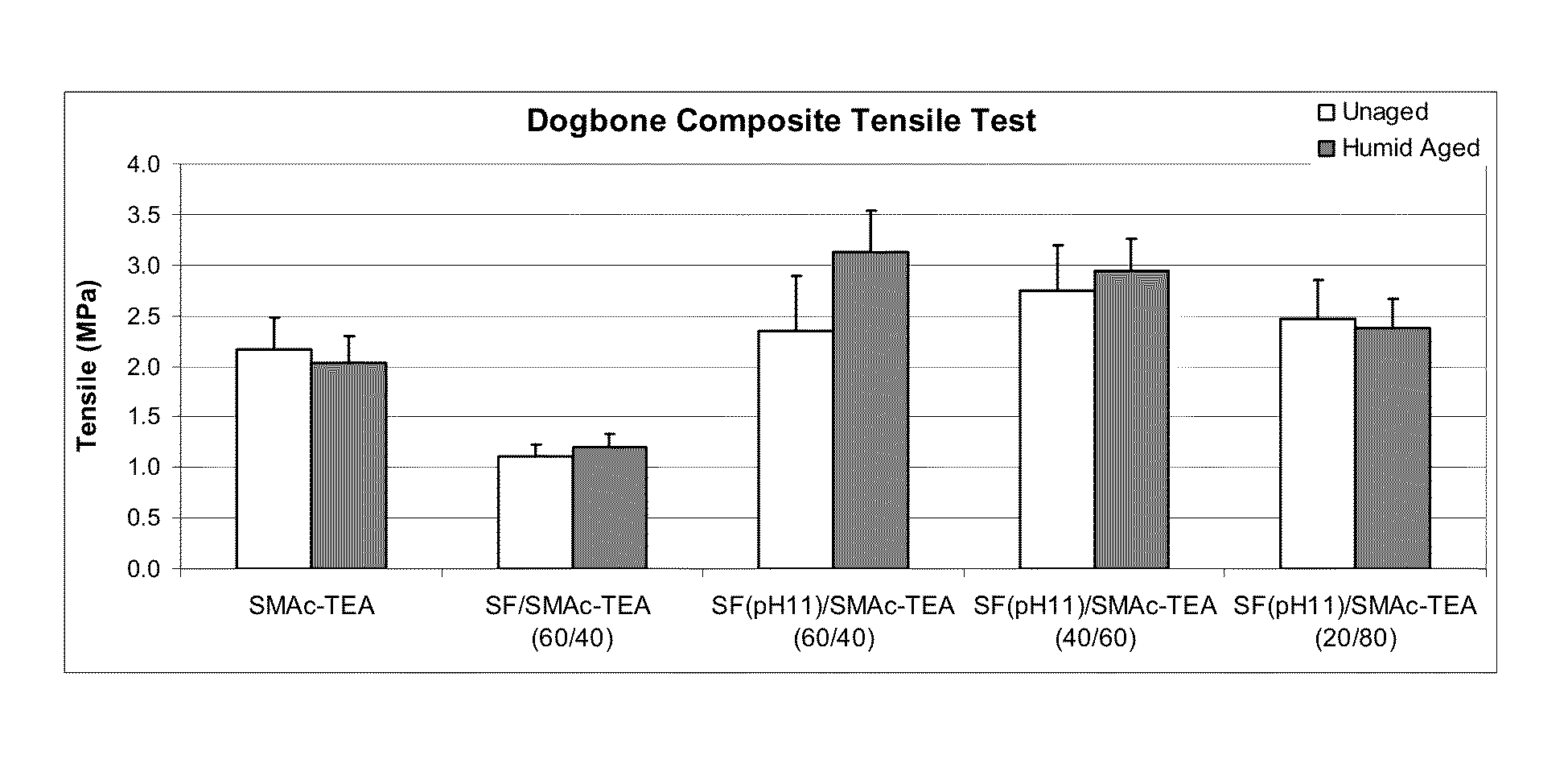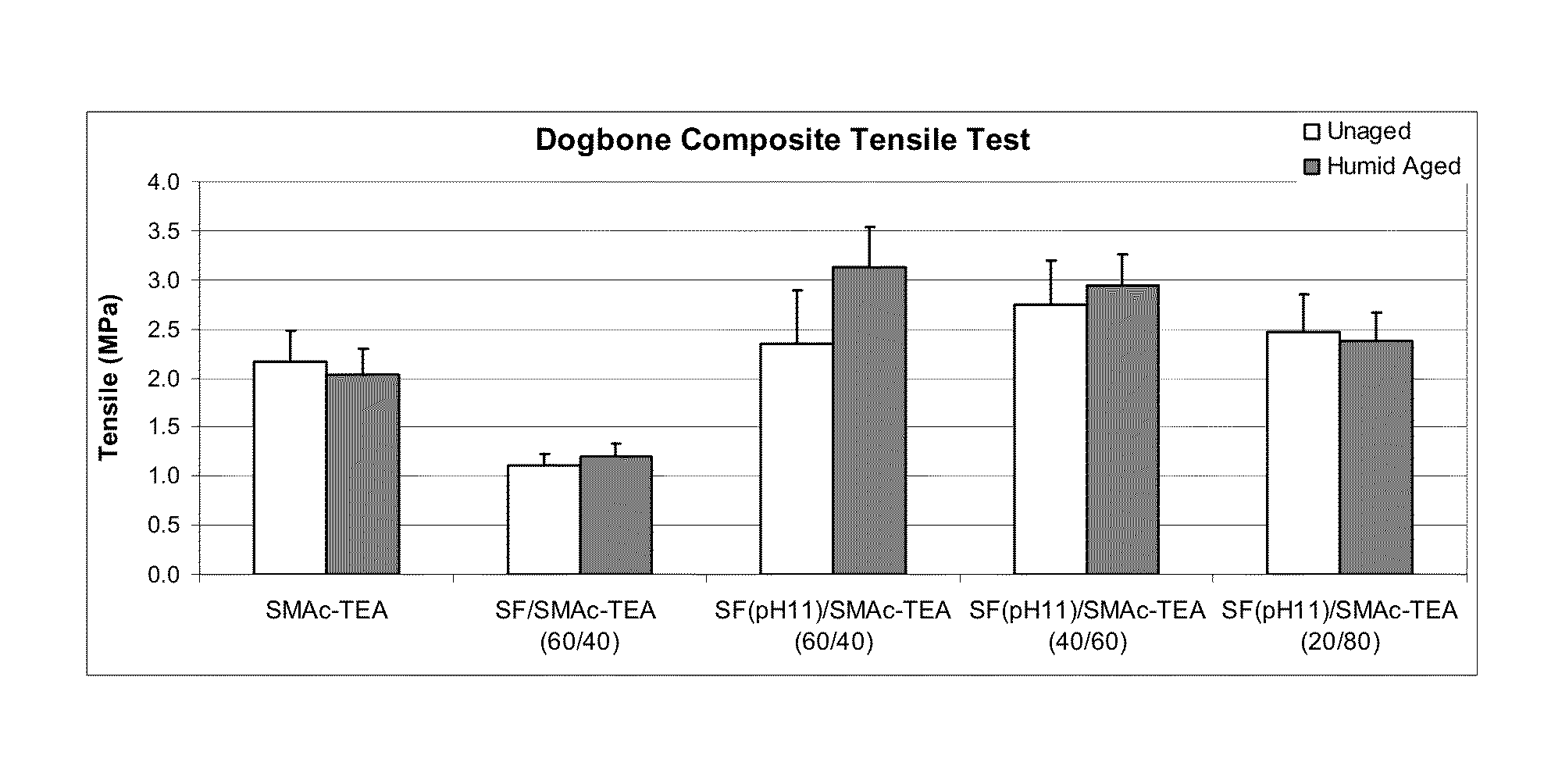Formaldehyde-free protein-containing binder compositions
a technology of protein-containing binder and composition, which is applied in the field of formaldehyde-free protein-containing binder composition, can solve the problems of poor gluing strength and water resistance of many types of protein-containing adhesives, and achieve the effects of reducing or even eliminating the need for petroleum-based binder ingredients, increasing the pot life and reusability of pre-cured binder compositions
- Summary
- Abstract
- Description
- Claims
- Application Information
AI Technical Summary
Benefits of technology
Problems solved by technology
Method used
Image
Examples
examples # 1-8
Examples #1-8
Preparation & Testing of a Glass-Binder Composite
example # 1
Example #1
Modification of Soy Flour
[0052]50 grams of defatted soy flour (Prolia 200 / 90, Cargill) is dispersed in 200 ml of DI water at room temperature. 0.5 grams of sodium bisulfite is then added to the soy flour dispersion. The viscosity of the soy flour dispersion drops shortly after the addition of the sodium bisulfite. The final soy flour dispersion has a solids concentration of 18.9% by oven method (drying at 125° C. for 2 hours).
example # 2
Example #2
Modification of Soy Flour
[0053]50 grams of defatted soy flour (Prolia 200 / 90, Cargill) is dispersed in 200 ml of DI water at room temperature. 0.5 grams of sodium bisulfite is then added to the soy flour dispersion. After the viscosity of the soy flour dispersion is decreased to a stable region, the pH of the dispersion is adjusted to 11 using an ammonium hydroxide solution (28-30%). The final soy flour dispersion has a solids concentration of 17.5% by oven method.
PUM
| Property | Measurement | Unit |
|---|---|---|
| wt. % | aaaaa | aaaaa |
| wt. % | aaaaa | aaaaa |
| temperature | aaaaa | aaaaa |
Abstract
Description
Claims
Application Information
 Login to view more
Login to view more - R&D Engineer
- R&D Manager
- IP Professional
- Industry Leading Data Capabilities
- Powerful AI technology
- Patent DNA Extraction
Browse by: Latest US Patents, China's latest patents, Technical Efficacy Thesaurus, Application Domain, Technology Topic.
© 2024 PatSnap. All rights reserved.Legal|Privacy policy|Modern Slavery Act Transparency Statement|Sitemap


